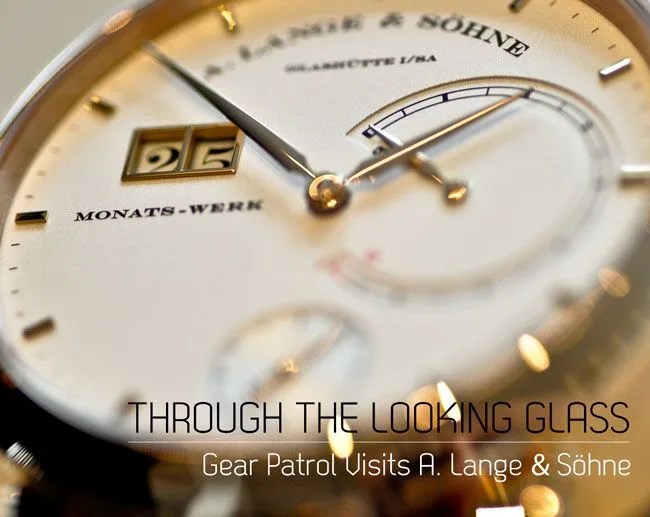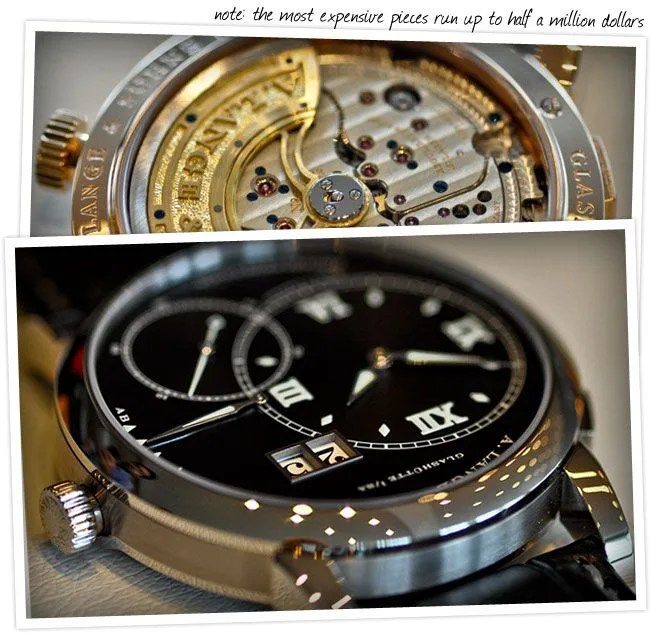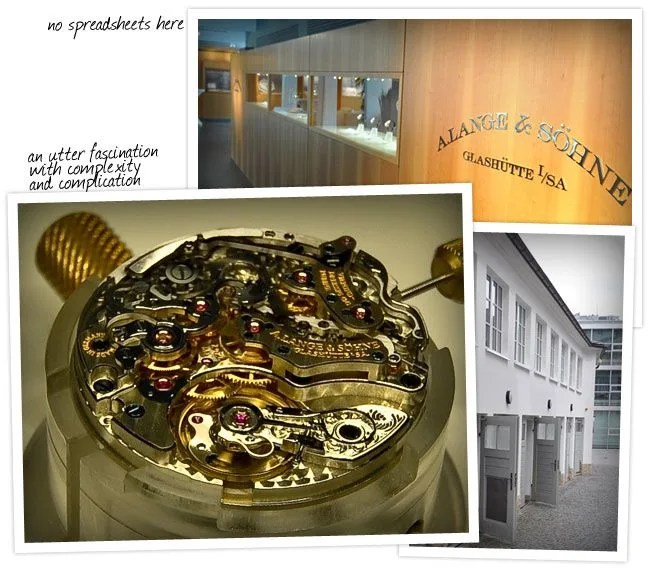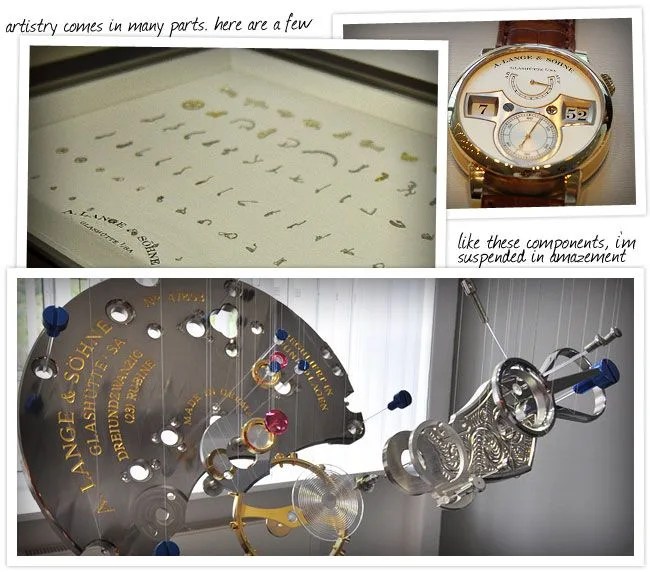
While peering through a magnifying lens, counting 184 tiny faces carved on a cherry pit, I started to understand what sets the German watch company, A. Lange & Söhne, apart. I was in the “Green Vault” of the Residenzschloss in Dresden, the historic palace of Saxon royalty, where a staggering collection of opulent knick-knacks is on display. Room after room was filled with priceless artifacts created for kings and dukes with more money than they knew what to do with. There’s a two-foot tall frigate carved entirely out of ivory, from the billowing wafer-thin sails to the tiny men climbing the rigging. There’s a jewel-encrusted solid gold tea set coated with enamel, never drunk from for fear of burned lips. In the next room, there’s a decorative porcelain fireplace that never saw a log. “Toys for rich boys,” remarked Christian Engelbrecht, PR manager for Lange and my host for the week.

The parallels between carved cherry pits and six figure wristwatches may not be instantly discernible. But both represent a handcrafted attention to detail on an almost microscopic level that people with means have always been willing to pay for. It’s easy in this era of obsolete smartphones and Chinese-made sneakers to question why a watch that doesn’t even tell the date and has to be wound every couple of days should cost $18,000. As a watch geek, I was a little more understanding of this when I went to visit the factory (or manufacture) of A. Lange & Söhne in Glashütte, a small village 30 kilometers from Dresden, near the Czech border. But I wanted to see what sets Lange apart from the better known Swiss companies.
First, a little history. The tradition of watchmaking started in Saxony in the 1840s after Ferdinand Adolph Lange returned from studying the art in Switzerland. Recognizing the appreciation, and local talent, for micro-craftsmanship present in his homeland, Lange and a couple others started a watchmaking school in the valley hamlet of Glashütte. In 1845, Lange started his own company, which started producing sturdy, accurate pocketwatches and the company, and the town, quickly gained a reputation. Lange passed the company on to his sons (Söhne) and the company remained a family business until World War II, just as the great grandson, Walter Lange, was finishing up his apprenticeship. Walter was conscripted into the German army and the business was shuttered.
On the last day of the war, Walter returned to Glashütte only to find the factory bombed by Soviet planes. Nothing remained of the factory or any of its tooling. No matter, the postwar Communist government expropriated all of the Glashütte watch companies to form a state-owned entity and Walter fled to the West to wait out the dark years that followed. When the Berlin Wall fell, Walter Lange returned once again to Glashütte to start up his shattered company. Four years later, in 1994, after a 50-year absence, the first collection of A. Lange & Söhne watches made a triumphant reappearance.



